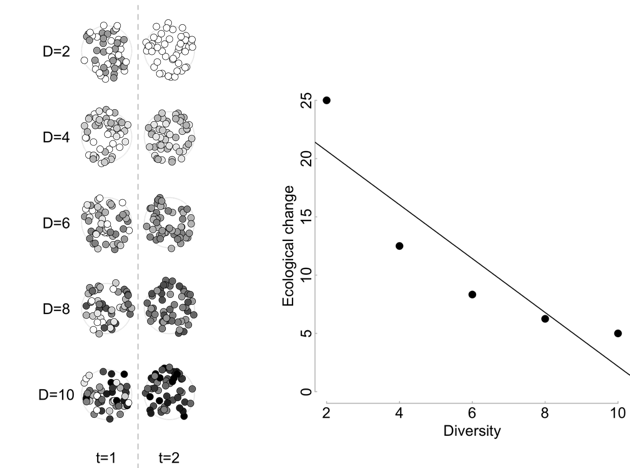The role of extinction in large-scale diversity-stability relationships
Simpson, C. & Kiessling, W. 2010 The role of extinction in large-scale diversity-stability relationships. Proceedings of the Royal Society B - Biological Sciences 277(1686): 1451-1456. pdf
More-diverse communities are thought to be ecologically stable because a greater number of ecological interactions among members allows for the increases in robustness and resilience. Diversity–stability relationships have mostly been studied on short ecological time scales but one study has identified such patterns over million-year time scales in reef communities. Here we propose and test a hypothesis for the mechanism of large-scale diversity–stability relationships in reefs. The extinction of community members destabilizes the community as a whole, unless there is sufficient diversity to buffer the commu- nity from the stochastic loss of members, thereby preventing collapse. If genera have high extinction rates, any variation in diversity among communities will result in a diversity–stability relationship. Conversely, in the absence of other mechanisms, the stability of low extinction communities is expected to be inde- pendent of diversity. We compare the extinction rates of six reef-building metazoan taxa to patterns of reef community stability and reef volume. We find that extinction of reef-builders occurs independent of reef volume, and that the strength of the diversity–stability relationship varies positively with extinction rate.
 An illustration of how high extinction rates can generate a diversity–stability relationship. Five reef communities with varying diversities are sampled at two time intervals. They each lose half of their species from one interval to the next. Ecological change is measured as the difference in community composition (number of species and their abundances) across intervals.
An illustration of how high extinction rates can generate a diversity–stability relationship. Five reef communities with varying diversities are sampled at two time intervals. They each lose half of their species from one interval to the next. Ecological change is measured as the difference in community composition (number of species and their abundances) across intervals.